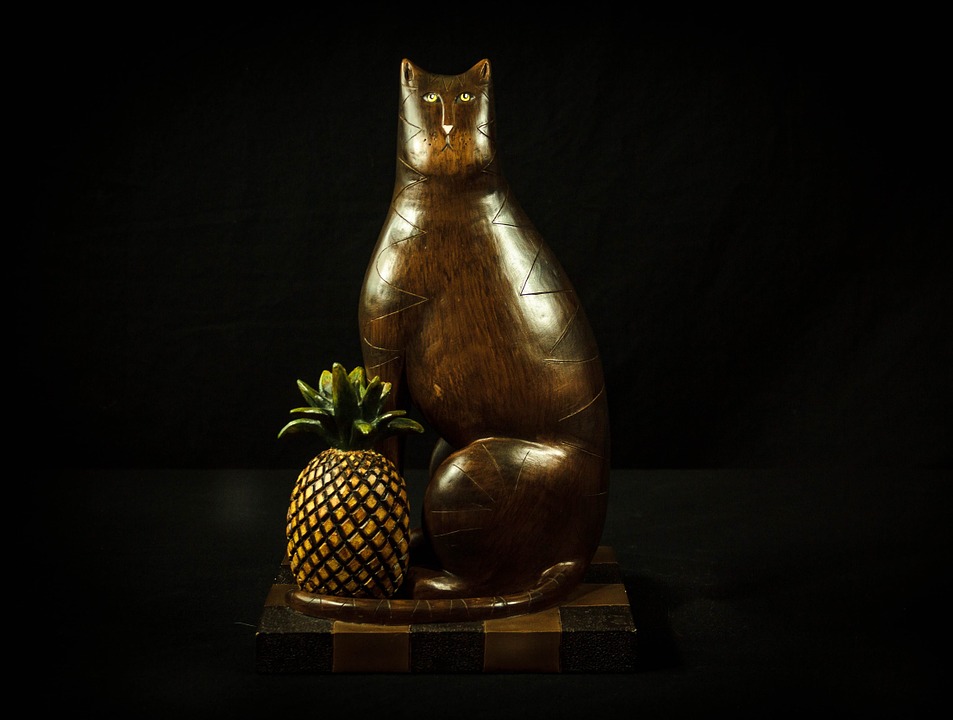Almonds, with their crunchy texture and nutty flavour, are a beloved snack for many humans. However, when it comes to our feline companions, the question arises: can cats safely enjoy this popular nut? The answer, unfortunately, is a resounding no. Almonds pose significant health risks to cats, ranging from digestive upset to potentially life-threatening cyanide poisoning. This article delves into the complexities surrounding almonds and their impact on cats, providing a comprehensive understanding of why they should be strictly avoided.
Part 1: The Hidden Dangers of Almonds for Cats

1.1. Cyanide Content: A Silent Threat
The primary concern with almonds, especially for cats, is their cyanide content. Almonds contain a compound called amygdalin, which, upon ingestion, breaks down into hydrogen cyanide. While sweet almonds typically contain lower levels of amygdalin compared to bitter almonds, they still pose a risk, especially when consumed in significant quantities.
1.2. Digestive Distress: An Uncomfortable Experience
Cats lack the necessary enzymes to properly digest almonds. Consuming almonds can lead to digestive upset, causing a range of unpleasant symptoms:
- Vomiting: A common response to undigested almonds, often accompanied by nausea.
- Diarrhoea: Almonds can irritate the digestive tract, resulting in loose or watery stools.
- Abdominal Pain: Cats may exhibit signs of discomfort in the abdomen, including restlessness and a hunched posture.
- Constipation: In some cases, the indigestible almond pieces can contribute to constipation.
1.3. Choking Hazard: A Real Risk, Especially for Kittens
Almonds are relatively large and can pose a choking hazard, particularly for kittens or smaller cats. The risk increases if the almond is not properly chewed and swallowed whole.
1.4. Pancreatitis: A Serious Complication
The high fat content in almonds can put a strain on a cat's pancreas, potentially leading to pancreatitis. This is a painful inflammation of the pancreas, which can be life-threatening if left untreated.
Part 2: The Chemistry of Toxicity: How Cyanide Affects Cats

2.1. Disrupting Cellular Respiration: Cyanide's Devastating Effect
Hydrogen cyanide, released from amygdalin, acts as a potent inhibitor of cellular respiration. It interferes with the body's ability to use oxygen, leading to a cascade of negative effects:
- Tissue Hypoxia: Cells become deprived of oxygen, leading to a state of oxygen deficiency.
- Metabolic Disruption: Cellular processes essential for life, such as energy production, are severely impaired.
- Organ Damage: Long-term cyanide exposure can damage vital organs, including the heart, brain, and kidneys.
Part 3: Recognizing the Signs of Almond Toxicity in Cats
Prompt identification of almond toxicity is crucial for timely intervention and potentially saving your cat's life. Be vigilant for any of the following symptoms:
3.1. Respiratory Distress: A Clear Indicator of Cyanide Poisoning
Cyanide poisoning can cause significant respiratory problems:
- Rapid Breathing: The cat may breathe rapidly, gasping for air.
- Panting: Even in a cool environment, the cat may pant excessively.
- Difficulty Breathing: The cat may struggle to inhale or exhale, exhibiting signs of labored breathing.
3.2. Neurological Symptoms: The Nervous System Under Attack
Cyanide affects the nervous system, leading to a range of neurological symptoms:
- Lethargy: The cat may appear unusually tired and sluggish.
- Weakness: The cat may have difficulty moving or walking.
- Tremors: The cat may exhibit involuntary muscle contractions or shaking.
- Seizures: Severe cyanide poisoning can trigger seizures.
- Coma: In severe cases, the cat may lapse into a coma.
3.3. Digestive Issues: A Complication of Almond Ingestion
As mentioned earlier, almond ingestion can cause digestive problems:
- Vomiting: The cat may vomit up undigested almond pieces.
- Diarrhoea: The cat may have watery or loose stools.
- Abdominal Pain: The cat may exhibit signs of discomfort in the abdomen, such as restlessness and a hunched posture.
Part 4: Immediate Action: What to Do if Your Cat Eats Almonds
If you suspect your cat has ingested almonds, immediate action is crucial. Time is of the essence when dealing with potential poisoning.
4.1. Contact Your Veterinarian: Seek Expert Guidance
Don't hesitate to contact your veterinarian immediately, describing the situation in detail. Include information like the amount of almonds consumed, the time of ingestion, and any observed symptoms.
4.2. Monitor Your Cat: Observe for Signs of Toxicity
Keep a close eye on your cat for any signs of almond toxicity. Note any changes in behaviour, appetite, breathing patterns, or physical condition.
4.3. Follow Veterinarian's Instructions: Prompt and Professional Care
Your veterinarian will provide specific instructions tailored to your cat's situation. These may include:
- Inducing Vomiting: Your veterinarian may recommend inducing vomiting to remove any remaining almond pieces from the stomach.
- Administering Activated Charcoal: Activated charcoal can help absorb toxins in the digestive tract, reducing their absorption into the bloodstream.
- Supportive Care: Your cat may require additional supportive care, such as intravenous fluids to prevent dehydration and medications to manage symptoms.
Part 5: Providing Safe and Healthy Treats for Your Feline Friend
While almonds are a definite no-go for cats, there are plenty of safe and delicious treats you can offer them.
5.1. Commercial Cat Treats: A Wide Selection of Safe Options
A vast array of commercial cat treats are available, formulated with ingredients that are safe and nutritious for cats. Look for treats that are low in fat, sugar, and artificial additives.
5.2. Homemade Cat Treats: A Personal Touch for Your Cat
With a little creativity and careful ingredient selection, you can make your own homemade cat treats. Some safe and tasty options include:
- Chicken Treats: Cooked chicken, finely chopped or blended, is a popular choice for cats.
- Fish Treats: Cooked fish, such as salmon or tuna, can be a nutritious and enticing treat.
- Sweet Potato Treats: Boiled or baked sweet potato, mashed or pureed, provides a sweet and healthy treat.
- Pumpkin Treats: Canned pumpkin puree, plain and unsweetened, is a good source of fiber and can aid in digestion.
5.3. Remember Moderation: Treats Should Be Just That
Even safe treats should be given in moderation. Overindulging can lead to weight gain, digestive issues, and other health problems.
Part 6: The Importance of a Balanced Diet: Fueling Your Cat's Health
Providing your cat with a balanced diet is fundamental for their overall well-being.
6.1. High-Quality Cat Food: A Foundation for Health
Choose a high-quality cat food that meets their nutritional needs, providing essential proteins, fats, vitamins, and minerals. Look for cat foods formulated specifically for their life stage, such as kitten, adult, or senior.
6.2. Consult with a Veterinarian: Tailored Nutrition for Your Cat
Consult with your veterinarian to determine the appropriate diet for your cat, considering their age, breed, activity level, and any underlying health conditions.
Part 7: The Role of Prevention: Keeping Almonds Out of Reach
Prevention is key to ensuring your cat's safety.
7.1. Secure Storage: Preventing Accidental Ingestion
Store almonds and other potential hazards in sealed containers, out of your cat's reach. Keep them in cabinets or on high shelves where your cat cannot access them.
7.2. Educate Family Members: A Shared Responsibility
Educate all family members and house guests about the dangers of feeding almonds to cats. Make sure everyone understands that almonds are toxic to cats and should never be given to them.
Part 8: Conclusion: Protecting Your Feline Friend
In conclusion, almonds are a dangerous food for cats and should be avoided entirely. Their cyanide content, potential digestive issues, and choking hazard pose significant threats to their health. By providing a balanced diet, safe treats, and taking steps to prevent accidental ingestion, you can ensure the safety and well-being of your beloved feline companion.
FAQs
1. Are all almonds toxic to cats?
Yes, all types of almonds, including sweet almonds, can be toxic to cats due to their amygdalin content. Even a small amount can be harmful.
2. What are the signs of almond poisoning in cats?
Symptoms of almond poisoning include respiratory distress (rapid breathing, panting, difficulty breathing), neurological symptoms (lethargy, weakness, tremors, seizures), and digestive problems (vomiting, diarrhoea, abdominal pain).
3. How much almond is dangerous for a cat?
There is no safe amount of almonds for cats. Even a small amount can be harmful, and the exact amount that is considered dangerous varies depending on the cat's size and individual sensitivity.
4. What should I do if my cat has eaten almonds?
Contact your veterinarian immediately and follow their instructions. Prompt action is crucial for treating potential poisoning.
5. Can cats eat almond butter?
Almond butter is also unsafe for cats, due to its high fat content and the presence of amygdalin.
6. Are there any almonds that are safe for cats to eat?
No, all types of almonds, including sweet almonds, are considered unsafe for cats.
7. What can I give my cat as a treat?
There are many safe and delicious cat treats available, including commercial treats and homemade options made with ingredients like cooked chicken, fish, sweet potato, and pumpkin. Always choose treats that are low in fat, sugar, and artificial additives.
8. How can I prevent my cat from eating almonds?
Store almonds and other potential hazards in sealed containers, out of your cat's reach. Keep them in cabinets or on high shelves where your cat cannot access them. Also, educate all family members and house guests about the dangers of feeding almonds to cats.
Everyone is watching
-

Are Cat Ribs Flexible? Understanding Their Anatomy
CATS & KITTENSThis article delves into the fascinating world of feline anatomy, exploring the flexibility of cat ribs and ho...
-

Can Cats Eat Bananas? (Everything You Need to Know)
CATS & KITTENSThis article dives into the intriguing question of whether cats can safely enjoy the sweet, yellow fruit, bana...
-

Cat Lifespan: How Long Do Cats Live?
CATS & KITTENSThis comprehensive guide explores the factors influencing the lifespan of our feline companions, providing ins...
-

Can Cats Get COVID-19? What You Need to Know
CATS & KITTENSThis article will delve into the fascinating world of feline COVID-19 susceptibility. We'll explore whether ca...
-

Can Cats Eat Eggs? A Complete Guide to Egg Safety for Your Feline Friend
CATS & KITTENSWhen it comes to treating our furry companions, we all want to ensure we're doing what's best for them. Eggs...
